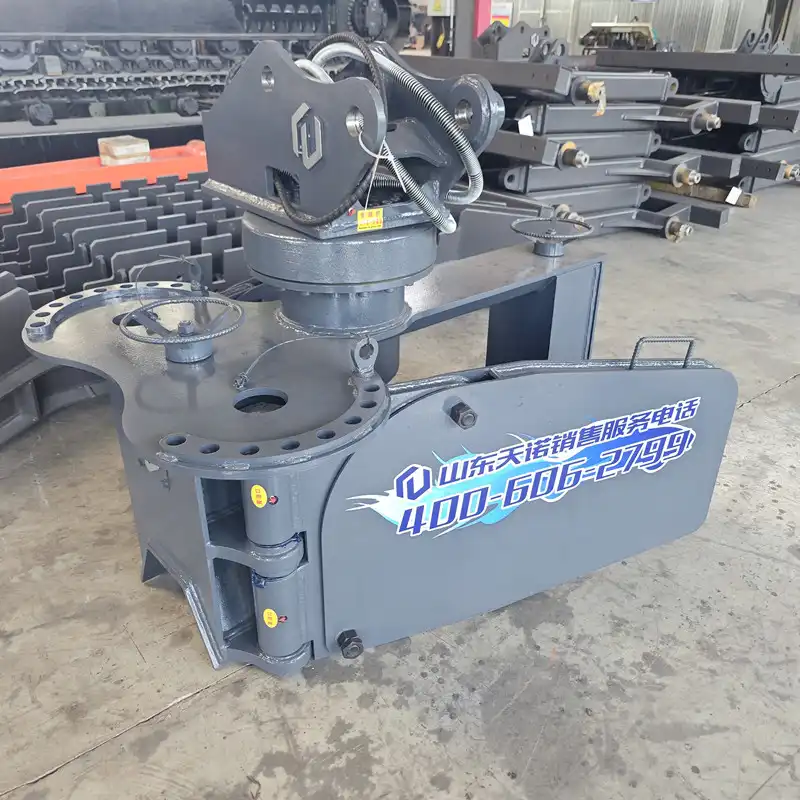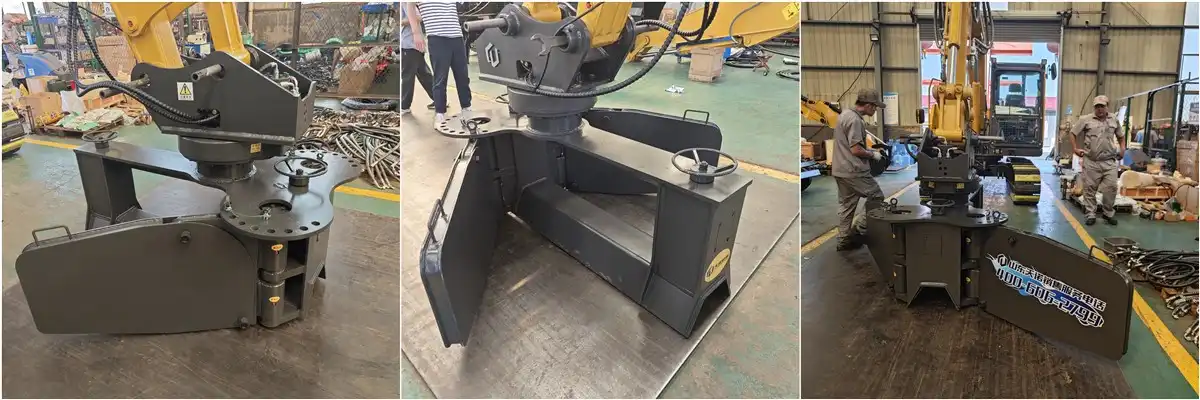How does a ballast plow improve track alignment and stability?
A ballast plow plays a crucial role in enhancing track alignment and stability, serving as an indispensable tool for railway maintenance. This specialized equipment effectively redistributes ballast along the track, creating a uniform and stable foundation for rail infrastructure. By utilizing it, railway maintenance teams can significantly improve track geometry, reduce the risk of derailments, and extend the lifespan of railway tracks. The plow's ability to shape and distribute ballast ensures optimal support for sleepers and rails, ultimately contributing to smoother train operations and increased safety.
Creates A Stable Ballast Profile
Evenly distributes ballast along the track
One of the primary functions is to create a stable and uniform ballast profile along the railway track. This process involves the even distribution of ballast materials, which typically consist of crushed stone or gravel. By employing a ballast plow, maintenance crews can effectively spread the ballast across the track bed, ensuring consistent support for the entire rail structure.
The even distribution of ballast is crucial for maintaining proper track alignment and preventing localized stress points. When ballast is unevenly distributed, it can lead to areas of weakness in the track foundation, potentially causing track irregularities and compromising safety. its ability to spread the material uniformly helps mitigate these risks, creating a solid and reliable base for the rails and sleepers.
Maintains optimal ballast shoulder width
Another vital aspect of creating a stable ballast profile is maintaining the correct ballast shoulder width. The shoulder is the area of ballast that extends beyond the ends of the sleepers, providing lateral support to the track structure. A ballast plow is designed to shape and maintain these shoulders, ensuring they meet the required specifications for width and slope.
Proper shoulder width is essential for track stability, as it helps resist lateral forces exerted by passing trains and prevents the shifting of ballast materials. By using a ballast plow to maintain optimal shoulder dimensions, railway operators can significantly enhance the track's ability to withstand the dynamic loads imposed by train traffic, reducing the likelihood of track misalignment and potential derailments.
Ensures consistent ballast depth for track support
The depth of the ballast layer is a critical factor in providing adequate support for the track structure. A ballast plow helps maintain a consistent ballast depth along the entire length of the track, ensuring uniform load distribution and support for the sleepers and rails. This consistency is vital for preventing track settlement and maintaining proper track geometry over time.
By regulating the ballast depth, a plow contributes to the overall stability of the track, reducing the occurrence of dips, bumps, or other irregularities that can affect train performance and passenger comfort. The ability to maintain a uniform ballast depth also aids in the distribution of loads across a larger area, minimizing stress concentrations and extending the life of track components.

Supports Proper Drainage
Clears debris from ballast for improved water flow
Effective drainage is paramount in maintaining track stability and longevity. A ballast plow plays a significant role in supporting proper drainage by clearing debris and contaminants from the ballast layer. Over time, fine particles, organic matter, and other debris can accumulate within the ballast, clogging the spaces between stones and impeding water flow.
By utilizing a ballast plow, maintenance teams can dislodge and remove these obstructions, restoring the ballast's ability to facilitate water drainage. This process helps prevent water from pooling on or within the track structure, which can lead to a range of issues, including ballast degradation, subgrade softening, and accelerated track deterioration.
Restores ballast porosity for efficient drainage
The porosity of ballast is crucial for its ability to drain water effectively. As ballast becomes compacted and contaminated over time, its porosity decreases, reducing its capacity to allow water to pass through quickly. A ballast plow helps restore and maintain this essential porosity by loosening and aerating the ballast material.
By breaking up compacted areas and redistributing the ballast, the plow creates air pockets and channels within the material, enhancing its ability to drain water efficiently. This improved porosity not only aids in quick water removal during rainfall but also helps prevent the buildup of hydrostatic pressure within the track structure, which can contribute to instability and erosion.
Prevents water pooling and subgrade erosion
One of the most critical functions of a ballast plow in supporting proper drainage is its role in preventing water pooling and subsequent subgrade erosion. When water is unable to drain efficiently from the track structure, it can accumulate in low-lying areas, leading to saturated ballast and weakened subgrade conditions.
By maintaining proper ballast profile and porosity, a ballast plow ensures that water is quickly channeled away from the track, reducing the risk of pooling. This rapid drainage helps protect the subgrade – the foundation upon which the entire track structure rests – from erosion and softening. Preventing subgrade issues is crucial for maintaining long-term track stability and reducing the frequency and cost of major track rehabilitation projects.

Preventing Track Deformation
Reduces ballast settlement and track irregularities
Track deformation is a significant concern in railway maintenance, and ballast plows play a crucial role in mitigating this issue. One of the primary ways a ballast plow helps prevent track deformation is by reducing ballast settlement and associated track irregularities. Over time, the weight of passing trains and environmental factors can cause ballast to settle unevenly, leading to dips, bumps, and other geometry issues in the track.
By regularly using a ballast plow to redistribute and level the ballast, maintenance crews can counteract these settlement effects. The plow's action helps maintain a consistent track profile, filling in low spots and smoothing out high points. This ongoing maintenance process ensures that the track remains level and properly aligned, reducing the development of track irregularities that can impact train performance and safety.
Minimizes lateral track movement under load
Another critical aspect of preventing track deformation is minimizing lateral track movement under the dynamic loads imposed by passing trains. Lateral movement can lead to track misalignment, increased wear on rail and wheel components, and potentially dangerous situations if left unchecked. A ballast plow contributes to lateral stability by ensuring proper ballast distribution and compaction, particularly in the critical areas around and between sleepers.
By maintaining optimal ballast shoulder width and ensuring adequate ballast depth, the plow helps create a solid foundation that resists lateral forces. This increased resistance to movement helps keep the track in its intended alignment, even under the stress of heavy train traffic. The result is a more stable track structure that maintains its geometry and requires less frequent realignment interventions.
Extends track life by maintaining proper geometry
Perhaps one of the most significant benefits of using a ballast plow in track maintenance is its contribution to extending the overall life of the track. By consistently maintaining proper track geometry through regular ballast management, railway operators can significantly reduce wear and tear on track components and postpone the need for major rehabilitation or replacement projects.
Proper geometry ensures that loads are distributed evenly across the track structure, preventing localized stress concentrations that can accelerate component degradation. Additionally, by keeping the track well-aligned and level, a ballast plow helps reduce dynamic forces generated by train passage, further contributing to the longevity of rails, sleepers, and other track elements. This proactive approach to maintenance not only extends track life but also leads to improved safety, reduced operational costs, and enhanced overall performance of the railway system.

FAQ
1. How often should a ballast plow be used for optimal track maintenance?
The frequency of ballast plowing depends on various factors such as traffic volume, environmental conditions, and track type. Generally, high-traffic mainlines may require plowing every 6-12 months, while less busy tracks might need it annually or bi-annually. Regular track inspections help determine the optimal plowing schedule.
2. How does ballast plowing compare to other track maintenance methods?
Ballast plowing is often more efficient and less disruptive than manual ballast regulation or complete track reconstruction. It offers a good balance between effectiveness and cost, making it a preferred method for routine maintenance. However, it may need to be complemented by other techniques such as tamping or ballast cleaning for comprehensive track care.
3. What are the environmental benefits of using a ballast plow?
Ballast plowing helps reduce the need for new ballast material by effectively redistributing existing ballast. This conservation of resources leads to reduced quarrying and transportation of new ballast, lowering the overall environmental impact of track maintenance. Additionally, by improving drainage, it helps prevent erosion and water pollution near railway lines.
4. How does ballast plowing contribute to rail safety?
By maintaining proper track geometry and stability, ballast plowing significantly enhances rail safety. It reduces the risk of derailments caused by track misalignment or poor support, ensures better ride quality, and allows for safer operation at higher speeds. Regular plowing also helps identify potential track issues early, enabling proactive maintenance and preventing safety hazards.
Ballast Plow Manufacturers
TianNuo Machinery stands out as a leading manufacturer of high-quality railway maintenance equipment. TianNuo's ballast plows are designed for optimal performance, suitable for machine weights ranging from 5 to 10 tons and compatible with standard gauge tracks of 1435 mm. With a width of 2800 mm, height of 460 mm, and an inclination angle of 8°, these plows offer efficient and precise ballast management. For those interested in TianNuo's railway maintenance solutions or seeking more information about their products, you can contact us at rich@stnd-machinery.com.
References
- Railway Track Engineering: Principles and Practice by J.S. Mundrey
- Track Geotechnology and Substructure Management by Ernest T. Selig and John M. Waters
- Handbook of Railway Vehicle Dynamics by Simon Iwnicki
- Modern Railway Track by Coenraad Esveld
- Railway Maintenance Engineering: With the Elements of Railway Economics by Surya Narayan Saxena
- Track Design Handbook for Light Rail Transit, Second Edition by Transportation Research Board
About Author: Arm
Arm is a leading expert in the field of specialized construction and railway maintenance equipment, working at Tiannuo Company. Tiannuo specializes in manufacturing a wide range of products, including railway maintenance equipment like railway sleeper changing machines and screening machines, excavator modification equipment such as excavator lifting cabs, various engineering arms for excavators, excavator accessories like digging buckets, and engineering vehicle auxiliary equipment like loader buckets.

